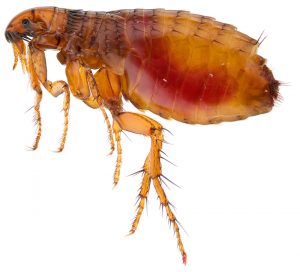SUFFERING WITH SMALL, RED ITCHY DOTS AROUND THE FEET AND ANKLES?
Suffering with small, red itchy dots around the feet and ankles? Chances are you’re getting bitten by fleas. They’re usually brought inside on pets and then transfer to the carpet, furniture…and you!
While you’re treating infected pets and washing their bedding, Pestpro can treat the areas in your home or business where fleas live and breed.
Call one to Pestpro Perth pest exterminators for friendly Customer Service and for details about treatment.
Fleas are usually found on cats, dogs, carpets, furniture, dusty floors, sandy sub floors, and even grassy areas. Adult fleas have a flat body so they can move easily through dense hair or fur. Each of the six legs has a pair of claws at the tip to stay attached to the host, regardless of scratching. The hind legs are well developed for jumping onto a passing host.
Fleas only inhabit warm-blooded animals, surviving on blood meals but often drop off between feeds. Flea bites are irritating and look like small red spots, due to the injection of flea saliva at the time of biting to prevent the blood coagulating.
Simple Prevention
Fleas prefer warm humid environments and breed mainly in the warmer months. Cleanliness is important in flea control. Floors should be regularly and thoroughly washed, swept and carpets vacuumed, or steam cleaned. Upholstered furniture and areas where pets rest or sleep should be given special attention. Before discarding, spray vacuuming with an aerosol to kill fleas & larvae.
Pet bedding should be washed or replaced, and pets given a flea wash. Keeping pets outside may reduce flea problems inside. The exclusion of any rats may also reduce flea problems. Flea control in Perth has never been easier.
Our Process
Flea infestations often come from a pet dog or cat. The pests attach to the animal when it’s outside, and then infest its fur and the places it sleeps indoors. Flea prevention for both the home, business and/or yard can be difficult. Without a proactive approach, any pet owner is vulnerable to an infestation.
Although fleas do not have wings, they have incredibly powerful elongated legs. These allow them to jump long distances and move easily between you and your pets, leaving behind itchy bites.
Successful control requires treatment of both your property and your pets, if you have them.
At pestpro, we offer safe, effective treatments for your home or business to ensure complete control of your infestation.
Our expert, local technicians understand the habits of flea species ensuring targeted treatments to get rid of all your fleas.
Your cat or dog looks to be in some discomfort and is constantly scratching or biting their fur. Is it a skin infection or could it be fleas feeding? But what do fleas look like? Before you take your pet to the vet there are a couple of ways to check if you have fleas in the home or business.
 CHARACTERISTICS
CHARACTERISTICS
SIZE
Tiny insects measuring about 1.5mm length and are laterally flattened.
COLOR
Reddish-brown.
BEHAVIOR
One female flea can lay about 18 eggs a day and just 20 fleas on a dog can produce 360 eggs per day and over 2,000 eggs in a week. After the home or business is treated with flea control products, it may take up to two weeks or more before fleas are no longer seen. Vacuuming as often as possible after the flea extermination can help shorten this time period.
HABITATS
Fleas are ectoparasites of animals, meaning they live on the outside of the body and need to feed on the blood of these animals in order to produce eggs. Because fleas usually feed and lay their eggs while the pet is sleeping, the pet’s resting areas are where the most fleas will be found. Many pets acquire fleas outside in the yard, which can lead to a flea infestation inside the home or business.
- Vacuum regularly.
- Wash pet bedding weekly, ideally at above 50°C.
- Other wildlife such as possums, wild cats, foxes, rabbits and rodents also carry fleas – when your pets are outside they can easily pick up these fleas and bring them back, so check them regularly using flea combs.
- Larvae feed on organic matter in carpets, bedding & furnishings. You need to try and remove any potential food supply to prevent fleas.
- When moving into a new home inspect carpets and flooring carefully for signs of eggs or ‘flea dirt’. If the previous owners had pets the flea larvae might be waiting for you.


















